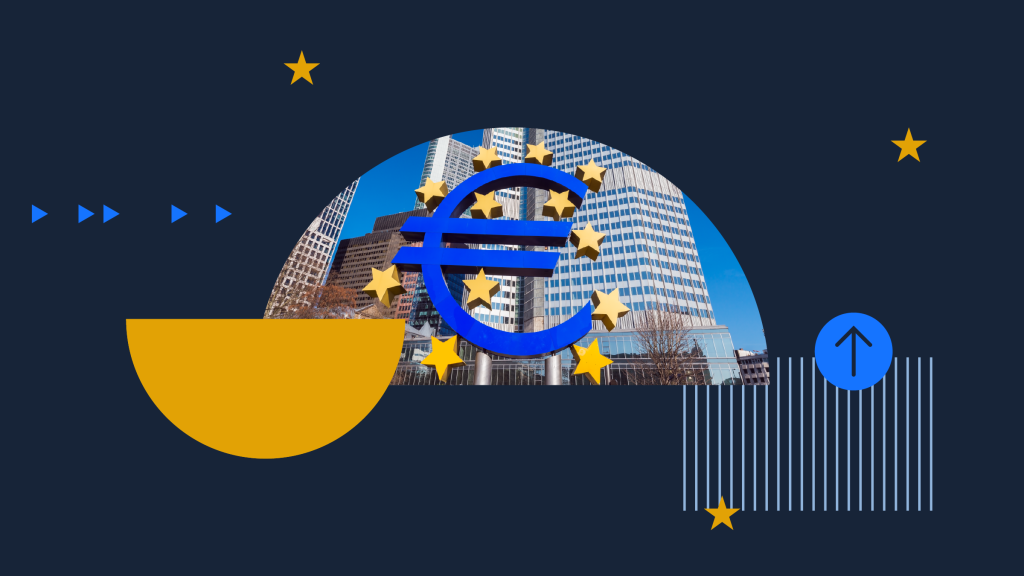Introduction
In the first quarter of 2024, the European Central Bank (ECB) released unexpectedly higher core inflation data, signaling persistent price pressures across the Eurozone. The ECB’s core inflation rate rose to 4.5%, surpassing market forecasts of 3.9%, renewing concerns about sustained inflationary trends in Europe. Conventional wisdom suggested this development would ripple through global markets, particularly affecting US credit conditions by widening consumer credit spreads, as investors would anticipate tighter monetary policies worldwide. Surprisingly, US consumer credit spreads instead narrowed during the same period, defying expectations and prompting analysts to reassess cross-Atlantic market dynamics. Why did the ECB’s inflation surprise lead to divergent movements in US consumer credit spreads? This article explores the underlying causes of this phenomenon, examining monetary policy differences, capital flow adjustments, and shifting consumer behaviors that collectively shaped this unexpected outcome.
ECB Inflation and Its Initial Market Reactions
The rise in core inflation within the Eurozone presented a challenge for the ECB’s policy stance, forcing it to consider a more hawkish approach to tame rising prices. Markets initially priced in faster rate hikes and prolonged tightening measures in the Eurozone. Typically, such inflation shocks would spill over into US financial markets, especially in credit sectors, as global investors recalibrate risk premia. US consumer credit spreads—reflecting the premium investors demand to hold consumer debt over safer government bonds—were expected to widen in response to heightened global economic uncertainty.
However, the data told a different story. The US consumer credit spread, measured by the difference between BAA-rated corporate bonds and 10-year Treasury yields, compressed by approximately 15 basis points in Q1 2024. This indicated improved credit conditions and lower perceived risk in US consumer debt, despite the negative inflation news out of Europe. This counterintuitive market behavior invites a deeper examination of the cross-market linkages.
Monetary Policy Divergence Between the US and Europe
One key factor behind the unexpected spread compression lies in the asynchronous monetary policy cycles of the Federal Reserve and the ECB. While the ECB faced rising inflationary pressures, the Federal Reserve’s inflation metrics in Q1 2024 showed moderate easing, with the US core Consumer Price Index declining from 3.8% to 3.4%. This divergence provided the Fed with more flexibility to pause or moderate interest rate hikes, reassuring US credit markets.
According to research by S&P Global Ratings, the Federal Reserve maintained a more accommodative stance compared to the ECB during this period. While the ECB signaled further rate increases to combat stubborn inflation, the Fed’s communication emphasized a data-dependent approach with a tilt toward patience, fostering confidence in the US credit market. Investors reacted by tightening credit spreads as perceived default risks diminished amid expectations of stable borrowing costs for US consumers.
This policy gap also influenced capital flows. The US dollar strengthened moderately against the euro as investors reallocated assets towards perceived stability in US markets. The relative attractiveness of US consumer debt increased, supported by solid employment figures and consumer spending growth. This capital reallocation helped compress credit spreads further.
Changes in US Consumer Behavior
Another dimension explaining the divergence stems from evolving US consumer credit dynamics in early 2024. Data from the Federal Reserve Bank of New York revealed that consumer credit balances grew by a modest 1.2% in Q1 2024, down from 3.5% in the prior quarter, indicating more cautious borrowing. Simultaneously, delinquency rates on credit cards and auto loans stabilized or improved slightly, suggesting better credit management by consumers.
Economic analysts argue that US consumers adapted to prior rate hikes by reducing discretionary debt and accelerating repayments on existing obligations. This behavioral shift decreased credit risk despite broader inflation concerns. Moreover, wage growth in key sectors such as technology and healthcare outpaced inflation, enhancing consumers’ repayment capacity.
These factors collectively contributed to improving credit fundamentals in the US consumer lending market, reflected in narrower credit spreads. This behavior contrasts with the Eurozone, where consumer confidence metrics declined, and credit conditions tightened amid inflation anxiety.
Cross-Market Capital Flow Adjustments
The unexpected compression of US consumer credit spreads also highlights evolving patterns of cross-market capital flows in response to divergent economic signals. With the ECB’s hawkish pivot, European fixed income investors sought to reposition portfolios, increasing demand for US dollar-denominated assets perceived as safer amid global uncertainty.
Reports from JP Morgan Asset Management indicate that Q1 2024 saw a $25 billion net inflow into US consumer credit funds, largely driven by European institutional investors reallocating capital. This influx of demand supported tighter spreads in US consumer credit markets, offsetting inflation-induced risks.
Conversely, European credit markets experienced volatility and spread widening, reflecting tightening liquidity and increased risk premiums. This capital redistribution illustrates how market participants navigate global monetary policy discrepancies by shifting funds to jurisdictions with more favorable credit conditions.

Divergent Perspectives: S&P Global vs. Economic Experts
The differing interpretations of this market phenomenon underscore its complexity. S&P Global analysts emphasize the monetary policy desynchronization between the US and Europe as the principal driver of credit spread divergence. Their reports suggest that investor focus on central bank communication and inflation trajectories fundamentally reshaped risk assessments across markets.
On the other hand, independent economists point to changes in consumer behavior as a critical explanatory factor. They argue that evolving borrower profiles, enhanced credit discipline, and labor market resilience in the US altered default risk projections independently of external inflation shocks. According to Dr. Helen Ramirez, an economist specializing in consumer finance, “The way US consumers adjusted borrowing habits amid prior rate hikes has buffered the credit market from external inflation pressures, creating this spread divergence.”
These contrasting viewpoints highlight the need for integrated analysis considering both macroeconomic policies and micro-level consumer data to fully understand credit market dynamics.
Broader Implications for Financial Markets
This unusual interaction between ECB inflation data and US credit spreads has broader ramifications. It illustrates the increasing importance of nuanced, region-specific factors in a globally interconnected market environment. Investors and policymakers must recognize that traditional assumptions about inflation and credit risk transmission may no longer hold uniformly.
For US lenders and credit investors, the findings suggest that domestic consumer fundamentals and Federal Reserve policy will continue to play dominant roles in credit market conditions, even amid significant global inflation shocks. For European markets, the divergence signals potential vulnerabilities requiring close monitoring, especially as tightening policies weigh on credit affordability.
Furthermore, this episode emphasizes the evolving nature of cross-border capital flows driven by monetary policy asymmetry. As central banks chart differing inflation responses, capital may increasingly flow toward markets with more stable or predictable credit environments, influencing asset prices and yield curves internationally.
Conclusion
The unexpected narrowing of US consumer credit spreads in Q1 2024, despite the ECB’s surprise inflation uptick, reflects a complex interplay of asynchronous monetary policies, evolving US consumer behavior, and strategic capital reallocations. The Federal Reserve’s more cautious approach contrasted with the ECB’s hawkish stance, fostering confidence in US credit markets. Meanwhile, US consumers’ improved credit discipline and resilient income trends reduced default risks, further supporting tighter spreads. These factors, combined with cross-market capital flows favoring US assets, explain why US consumer credit spreads moved contrary to initial expectations. This case underscores the importance of integrating macroeconomic and microeconomic analyses to understand global financial market reactions fully.































